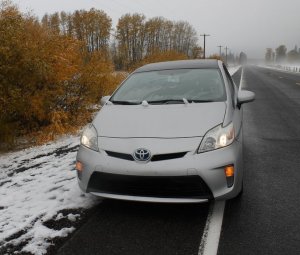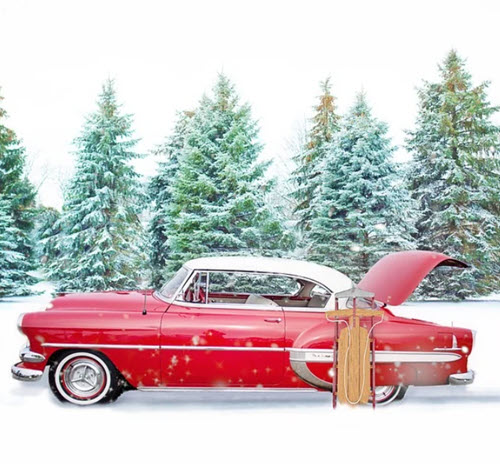Winter Driving – Falling snow is beautiful when your whole family is home, and you’re tucked up in a warm house. It’s lovely floating about while you’re in a hot tub—beauty changes to a monster when you’re unprepared for the winter conditions, though. Your trip over the river and through the woods can become terrifying if you’re not ready to drive in snow. While winter driving is sometimes a necessary evil, it doesn’t have to be unsafe.
While it is essential to make sure your car is prepared for winter driving, you can take steps to make sure that you are also ready for snow on the roads.
Winter Driving Tips and Tricks for You
To begin, make sure you know what your car is going to do in the snow. This could be as simple as becoming familiar with the weather features that your vehicle has, like anti-lock brakes, and being aware of what kind of tires are installed. Take some time to find an ample open space like an empty parking lot. Here you can practice your winter driving skills in a non-stress environment. Begin with stopping and starting in the snow. Then you can speed up a little before stopping just to see if it will begin to slide. Being familiar with how your car reacts will help you remain calm when winter driving gets stressful.
Another way for you to be prepared is always to plan extra time for your winter driving trip. Road conditions can degrade quickly  during winter storms and make the trip time increase. Even if the roads are not back, just driving through rain or snow can cause slow-downs. And you never know who else is going to be on the road causing problems. So make sure to allow for extra time in your planning.
during winter storms and make the trip time increase. Even if the roads are not back, just driving through rain or snow can cause slow-downs. And you never know who else is going to be on the road causing problems. So make sure to allow for extra time in your planning.
It is easy to check the weather on our phones and computers, but sometimes we forget. During winter, make sure you take a moment to review the weather conditions on any planned route.
It is a good idea for winter driving to pack your trunk with gear and supplies you might need in emergencies. Make sure you have a bag of salt or kitty litter and maybe a small shovel if you get stuck and need to dig out. Blankets, some bottles of water, and, of course, chocolate is also essential items for your winter driving emergency supplies. For long trips, you might consider including flashlights and an emergency candle. A candle can provide warmth if you are stuck for a long time or run out of gas.
Winter driving situations may force you to turn around or take a different route to your destination. When this is a possibility, it is essential to fill your gas tank regularly; winter might be the time to fill up when it’s only half empty. Also, a full tank helps prevent the gas line from freezing.
Other common-sense ideas to improve your winter driving experience include
- Drive a little slower. Winter driving means the conditions are not always expected. Slower speeds will let you respond to the situation appropriately.
- Leave just a little more distance between you and the car in front of you
- Be mindful when driving over bridges. They are often icy when other areas of the road are not
- Be alert for animals. At dusk and dawn, animals will be looking for water, and because of winter, they have moved further into valley areas. Snow is covering their usual hunting ground, so they are a little bolder at the roadsides.
- Don’t use cruise control when there is any possibility of a slippery road. It would help if you were entirely in control of unexpected situations that are sure to come up in winter driving.
In conclusion
By making sure both you and your car are ready for any winter driving conditions, your trip over the river and through the woods can be safe and enjoyable for everyone. Contact Bryce at 801-631-6980. Or drop us a quick like at http://dev.globalmarketingplus.com/twistedwrench/contact/


Recent Comments